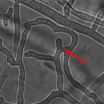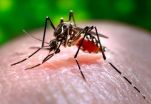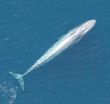(Press-News.org) BOSTON – Micro RNAs (miRNA) have recently emerged as key therapeutic agents against cancers and are actively being evaluated in pre-clinical models of various cancers as well as in human clinical trials.
Now, new findings show that a combination therapy of two miRNAs, let-7 and miR-34, suppressed tumor growth in an animal model of non-small-cell lung cancer, offering a promising therapeutic avenue for this extremely aggressive malignancy.
Currently reported online in the journal Oncogene, the study provides two important examples of basic science discoveries making their way to the clinical setting and offers the possibility of a less toxic and more direct method to target multiple biologically relevant pathways to which tumor cells have become addicted.
"Targeted cancer therapies are often used in combinations to help offset primary or secondary resistance," explains co-senior author Frank Slack, PhD, Director of the Institute for RNA Medicine (iRM) in the Cancer Center at Beth Israel Deaconess Medical Center (BIDMC) who conducted the work while at Yale University, together with Andreas Bader, PhD, and colleagues at Mirna Therapeutics, Austin, Texas. "We know that miRNAs target many oncogenes. We, therefore, hypothesized that a combination of two miRNAs could similarly offset resistance."
Lung cancer is the leading cause of cancer-related deaths worldwide, and non-small-cell lung cancer (NSCLC) makes up the bulk of newly identified lung-cancer cases.
"NSCLC is extremely aggressive, owing to an accumulation of mutations that affect the cancer pathways RAS and p53," says Slack. The K-RAS mutation is found in about 25 percent of NSCLC patients, and the p53 mutation is in about 50 percent of these individuals. There are no currently approved drugs that are effective for these patients.
Previous work by Slack and Bader found that the let-7 and miR-34 miRNAs function as tumor suppressors.
"Our research groups and others have found that both of these miRNAs can inhibit tumor growth in a variety of cell and animal model systems when used as therapeutic agents," says Slack. "Because tumor formation in this NSCLC model depends on two or more signaling pathways, and because let-7 and miR-34 repress distinct oncogenes, we explored whether combining let-7 and miR-34 into a single therapeutic could be even more effective."
Slack co-discovered let-7 with Gary Ruvkun, PhD, in a model of C. elegans in 2000 and showed that rather than coding for a typical protein-coding gene, let-7 coded for a micro RNA. With the sequencing of the human genome, it didn't take the investigators long to find a homologue of the gene in the human genome, and let-7 became the first known human miRNA.
"We realized early on that a reduced expression of let-7 was causing stem cells to divide out of control, which is one of the hallmarks of cancer," he explains. When Slack's laboratory at Yale University conducted a genetic screen looking for suppressors of the let-7 mutant phenotype, one of the genes that emerged was RAS, a well-known oncogene that promotes the proliferation of cells. Together with scientists at Mirna Therapeutics, Slack's group tested therapeutic miRNA formulations provided by the company in genetically engineered animal models of lung cancer. In this new paper, they report that intravenous administration of let-7 by a liposomal nanoparticle can directly deliver the miRNA to tumors in the lung.
The miR-34 micro RNA, also first discovered in C. elegans, is known to be a downstream effector of p53, the so-called "guardian of the genome."
"Because p53 loss is prevalent in many different types of cancer, we examined the role of miR-34 in lung cancer," says Slack. The investigators used the same liposomal nanoparticles to deliver the miR-34 by intravenous administration to the lung tumor model, and once again, demonstrated efficacy in cancer suppression.
"So, we thought, 'What if we tried both of these microRNAs together?'" says Slack. The investigators took half the dose of each and showed that it was effective, demonstrating that a combination of these two biologically relevant, tumor-suppressive miRNAs is superior in its ability to repress oncogene expression, prevent proliferation and invasion of cancer cells in culture, inhibit tumor proliferation in a mouse model of NSCLC and confer a survival advantage.
"Half the dose of each of these miRNAs was capable of repressing relevant biological targets in cells and in vivo, and was well tolerated by the animals," notes Slack. "We have performed these timely in vivo studies using a liposomal microRNA delivery agent already in clinical trials, which could accelerate the translation of this combinatorial miRNA therapeutic approach into the clinic."
INFORMATION:
In addition to Slack and Bader, coauthors include first author A.L. Kasinski, E. Shimer, K. C. Stahlhut and X. Chen from Yale University and K. Kelnar, J. Zhao, and S. Dysart from Mirna Therapeutics.
Frank Slack and Andreas Bader are shareholders of Mirna Therapeutics, for which Slack is a consultant.
This study was funded, in part, by support from the American Cancer Society, NIH Pathway to Independence Award (CA178091) and National Institutes of Health grant CA131301, as well as a commercialization grant from the Cancer Prevention & Research Institute of Texas (CPRIT) to Mirna Therapeutics.
Beth Israel Deaconess Medical Center is a patient care, teaching and research affiliate of Harvard Medical School, and currently ranks third in National Institutes of Health funding among independent hospitals nationwide.
BIDMC is in the community with Beth Israel Deaconess Hospital-Milton, Beth Israel Deaconess Hospital-Needham, Beth Israel Deaconess Hospital-Plymouth, Anna Jaques Hospital, Cambridge Health Alliance, Lawrence General Hospital, Signature Health Care, Beth Israel Deaconess HealthCare, Community Care Alliance, and Atrius Health. BIDMC is also clinically affiliated with the Joslin Diabetes Center and Hebrew Senior Life and is a research partner of Dana-Farber/Harvard Cancer Center. BIDMC is the official hospital of the Boston Red Sox. For more information, visit http://www.bidmc.org.
Combination microRNA therapy shown to suppress non-small-cell lung cancer
2014-09-05
ELSE PRESS RELEASES FROM THIS DATE:
Stigma as a barrier to mental health care
2014-09-05
Over 60 million Americans are thought to experience mental illness in a given year, and the impacts of mental illness are undoubtedly felt by millions more in the form of family members, friends, and coworkers. Despite the availability of effective evidence-based treatment, about 40% of individuals with serious mental illness do not receive care and many who begin an intervention fail to complete it. A new report, published in Psychological Science in the Public Interest, a journal of the Association for Psychological Science, investigates stigma as a significant barrier ...
An 'anchor' that keeps proteins together
2014-09-05
All organisms react to different external and internal stimuli: if, for example, the hyphae fungus Sordaria macrospora is supplied with food, it produces fruiting bodies as part of its oestrous cycle. To initiate this reaction, signals have to be transmitted within the cell, which are conveyed by proteins. Physical proximity is a fundamental requirement for different proteins to be able to communicate with each other. Generating that proximity is what scaffolding proteins do, by binding like an anchor to several proteins and keeping them together for the duration of signal ...
Use of dengue vaccine may cause short-term spikes in its prevalence
2014-09-05
CORVALLIS, Ore. – As researchers continue to work toward vaccines for serious tropical diseases such as dengue fever, experts caution in a new report that such vaccines will probably cause temporary but significant spikes in the disease in the years after they are first used.
This counter-intuitive and unwanted result could lead to frustrated policy makers, a skeptical public and concerns that the vaccine is making things worse instead of better, researchers say.
In fact, it will just be the natural result of complex interactions between less-than-perfect vaccine protection ...
E-cigarettes: Studies presented at the ERS Congress
2014-09-05
Munich, Germany: The latest evidence on the potential benefits and risks of e-cigarettes has been presented this week at the European Respiratory Society's International Congress in Munich.
Electronic cigarettes have received much attention in recent years as their use has increased across Europe. As the devices are relatively new, there is little long-term evidence detailing the potential harm or benefit that these devices can cause.
During the ERS Congress, a number of abstracts will be presented on the topic. The key outcomes are revealed here:
Research into ...
IBD patients: Consider giving infliximab a second try
2014-09-05
Bethesda, MD (Sept. 5, 2014) — Restarting infliximab therapy after a drug holiday is safe and effective for patients with inflammatory bowel disease (IBD), according to a new study1 in Clinical Gastroenterology and Hepatology, the official clinical practice journal of the American Gastroenterological Association.
"Our findings suggest that starting infliximab after a history of prior therapy can be very beneficial to patients," said lead study author Filip Baert, MD, PhD, from the department of gastroenterology, University Hospitals Leuven in Belgium. "Most striking, ...
New blood test could offer more tailored treatment of ovarian cancer
2014-09-05
A new blood test allowing doctors to predict which ovarian cancer patients will respond to particular types of treatment is a step closer following a new study by Manchester scientists.
Researchers from The University of Manchester and The Christie NHS Foundation Trust - both part of Manchester Cancer Research Centre - say the test could be developed and used in hospitals within the next few years.
It would mean medics could see which patients could benefit from blood vessel-targeting drugs - such as bevacizumab - in addition to conventional therapy. Meanwhilehile others ...
California blue whales rebound from whaling, first of their kin to do so
2014-09-05
The number of California blue whales has rebounded to near historical levels, according to new research by the University of Washington, and while the number of blue whales struck by ships is likely above allowable U.S. limits, such strikes do not immediately threaten that recovery.
This is the only population of blue whales known to have recovered from whaling – blue whales as a species having been hunted nearly to extinction.
Blue whales – nearly 100 feet in length and weighing 190 tons as adults – are the largest animals on earth. And they are the heaviest ever, weighing ...
Glanville fritillary genome sequenced at the University of Helsinki
2014-09-05
The Glanville fritillary has long been an internationally known model species for ecology and evolutionary biology, whose population biology has been studied on the Åland Islands for more than twenty years. Now the species has become even more significant. Led by Research Professor Ilkka Hanski, the Metapopulation Research Group (MRG) at the University of Helsinki has sequenced the full genome of the Glanville fritillary together with three groups from the Institute of Biotechnology at the same university.
Before the sequencing of the Glanville fritillary genome, which ...
Near-extinct African amphibians 'invisible' under climate change
2014-09-05
An international team of researchers has found that the majority of threatened species are 'invisible' when using modern methods to predict species distributions under climate change.
Using African amphibians as a case study, the researchers found that more than 90 per cent of the species listed as threatened on The IUCN Red List of Threatened Species are omitted by the most popular tools for species distribution modelling.
The study, led by researchers from the Universities of York and Copenhagen and the United Nations Environment Programme World Conservation Monitoring ...
Caffeine therapy for apnea of prematurity does not have long-term harmful effects on sleep
2014-09-05
Caffeine therapy for apnea of prematurity has no long-term harmful effects on sleep or control of breathing, according to a new study of 201 preterm children assessed at ages 5-12, the first study in humans to examine the long-term effects of neonatal caffeine treatment on sleep regulation and ventilatory control.
"Animal studies have suggested that administration of neonatal caffeine to premature infants, while improving survival and other outcomes, may have long-term detrimental effects on sleep and control of breathing during sleep," said lead author Carole L. Marcus, ...



